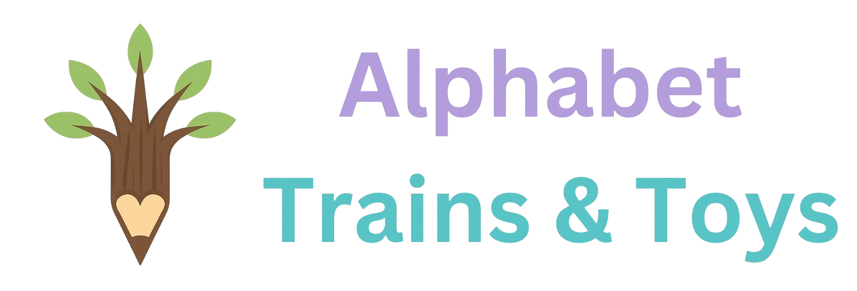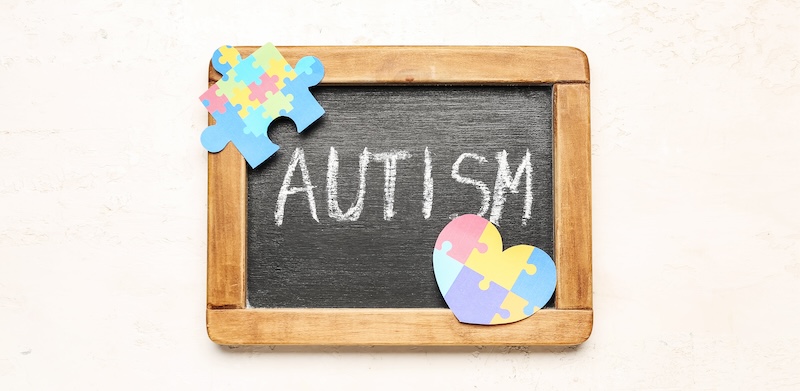Overview of Childhood Autism
Definition and Characteristics
Autism Spectrum Disorder (ASD) is a developmental disorder characterized by difficulties with social interaction, communication, and repetitive behaviors. Children with autism may exhibit a wide range of symptoms and abilities, making each case unique.
- Brief History: Autism was first described by Leo Kanner in the 1940s. Since then, our understanding and diagnostic criteria have evolved significantly.
- Common Misconceptions: Contrary to popular belief, autism is not caused by vaccines, and it is not a result of bad parenting.

Early Signs and Symptoms
- Delayed speech development or lack of speech
- Difficulty making eye contact
- Repetitive behaviors such as hand-flapping or rocking
- Strong resistance to changes in routine
- Lack of interest in peer interactions
- Unusual reactions to sensory stimuli (e.g., sounds, textures)
Diagnostic Criteria
The DSM-5 outlines specific criteria for diagnosing autism, including persistent deficits in social communication and interaction, and restricted, repetitive patterns of behavior, interests, or activities.
- Diagnostic Process: Diagnosis typically involves a multidisciplinary team, including pediatricians, psychologists, and speech therapists. The assessment may include parent interviews, observations, and standardized tests.
Autism Spectrum
What is the Autism Spectrum?
The autism spectrum refers to the range of symptoms and severity that individuals with ASD can experience. It includes varying degrees of difficulty with social interaction, communication, and behaviors.
Causes and Risk Factors
Genetic Factors
Research indicates a strong genetic component in the development of autism. Numerous studies have identified a variety of genes associated with the disorder, suggesting that genetic mutations or variations play a significant role in the likelihood of a child being diagnosed with autism. These genetic factors can affect brain development and synaptic function, which are critical in social communication and behavior.
Key Points on Genetic Factors:
Heritability: Autism tends to run in families, indicating a heritable component. Siblings of children with autism have a higher risk of being diagnosed with the disorder. Twin studies have shown that if one identical twin is diagnosed with autism, the other twin has a significantly increased likelihood of also having autism, compared to fraternal twins.
Gene Mutations and Variations: Certain gene mutations and variations have been associated with autism. Some of these include mutations in genes involved in synaptic function, such as SHANK3, and genes that regulate brain development, like CHD8. Additionally, copy number variations (CNVs), which are deletions or duplications of sections of DNA, have also been linked to autism.
Genetic Syndromes: Some genetic syndromes and disorders, such as Fragile X syndrome, Rett syndrome, and Tuberous Sclerosis Complex (TSC), have a higher incidence of autism. These conditions further illustrate the genetic connection to autism.
Advanced Parental Age: Research has found that advanced parental age, particularly paternal age, is associated with an increased risk of autism. Older parents are more likely to have genetic mutations in their germ cells, which can be passed on to their children.
Epigenetics: Epigenetic factors, which involve changes in gene expression without altering the underlying DNA sequence, may also play a role in autism. Environmental influences can lead to epigenetic modifications that affect gene expression related to brain development and function.
Ongoing Research: The field of genetics and autism is rapidly evolving, with ongoing research aimed at identifying specific genetic markers and understanding how these genetic factors interact with environmental influences. This research holds promise for improving diagnosis, understanding the underlying mechanisms of autism, and developing targeted interventions and treatments.
Online Resources for Genetic Factors in Autism
- Simons Foundation Autism Research Initiative (SFARI): Offers extensive resources and research updates on the genetics of autism. SFARI
- National Institute of Mental Health (NIMH): Provides information on the latest genetic research in autism. NIMH Autism
- Autism Speaks - Genetics: A resource for understanding the genetic aspects of autism. Autism Speaks Genetics
By understanding the genetic factors associated with autism, researchers and clinicians can better comprehend the complexities of the disorder and work towards more effective interventions and supports for individuals with autism and their families.
Environmental Influences
While genetic factors play a significant role in the development of autism, environmental influences also contribute to the risk of developing the disorder. These factors can interact with genetic predispositions to influence brain development and function, potentially leading to autism. Understanding these environmental influences helps provide a more comprehensive view of the causes of autism.
Key Points on Environmental Influences:
Prenatal Factors:
- Maternal Health: Certain conditions during pregnancy, such as maternal infections (e.g., rubella, cytomegalovirus), autoimmune disorders, and severe stress, have been linked to an increased risk of autism in the child.
- Medication and Substance Exposure: Exposure to certain medications (e.g., valproic acid, thalidomide) and substances (e.g., alcohol, illicit drugs) during pregnancy has been associated with a higher likelihood of autism.
- Nutritional Deficiencies: Inadequate intake of essential nutrients, such as folic acid, during pregnancy may contribute to the risk of autism. Ensuring proper maternal nutrition is important for optimal fetal brain development.
Perinatal and Neonatal Factors:
- Birth Complications: Complications during birth, such as premature birth, low birth weight, and birth asphyxia (lack of oxygen at birth), have been identified as potential risk factors for autism. These conditions can affect brain development and increase the vulnerability to autism.
- Parental Age: Advanced parental age, particularly paternal age, has been linked to an increased risk of autism. Older parents are more likely to have genetic mutations in their germ cells, which can contribute to the development of autism in their offspring.
Environmental Toxins and Pollutants:
- Air Pollution: Exposure to high levels of air pollution during pregnancy and early childhood has been associated with an increased risk of autism. Pollutants such as particulate matter (PM), nitrogen dioxide (NO2), and heavy metals can negatively impact brain development.
- Chemical Exposures: Exposure to certain chemicals, such as pesticides, phthalates, and bisphenol A (BPA), during critical periods of development may increase the risk of autism. These chemicals can disrupt endocrine function and interfere with normal brain development.
Immune System Dysregulation:
- Maternal Immune Activation: Maternal immune activation due to infections or inflammation during pregnancy has been linked to an increased risk of autism. This activation can affect fetal brain development and alter the immune system's response.
- Autoimmune Disorders: Some studies suggest that autoimmune disorders in parents, particularly in mothers, may increase the risk of autism in their children. These disorders can lead to abnormal immune responses that affect brain development.
Socioeconomic and Lifestyle Factors:
- Socioeconomic Status: Low socioeconomic status has been associated with an increased risk of autism. Factors such as limited access to healthcare, poor nutrition, and exposure to environmental toxins can contribute to this increased risk.
- Lifestyle Factors: Maternal lifestyle factors, including stress, diet, and overall health, can influence the risk of autism. Maintaining a healthy lifestyle and reducing stress during pregnancy may help mitigate some of these risks.
Epigenetic Modifications:
- Gene-Environment Interactions: Environmental factors can lead to epigenetic changes, which alter gene expression without changing the underlying DNA sequence. These epigenetic modifications can affect brain development and function, contributing to the development of autism.
Online Resources for Environmental Influences in Autism
- National Institute of Environmental Health Sciences (NIEHS): Provides information on environmental factors and autism. NIEHS Autism
- Autism Speaks - Environmental Factors: A resource for understanding the environmental influences on autism. Autism Speaks Environmental Factors
- Centers for Disease Control and Prevention (CDC): Offers information on risk factors for autism, including environmental influences. CDC Autism Risk Factors
Understanding the interplay between genetic predispositions and environmental influences is crucial for developing comprehensive prevention and intervention strategies for autism. Ongoing research in this area aims to identify modifiable risk factors and inform public health policies to reduce the incidence and impact of autism.
Other Contributing Factors
Some studies suggest a link between environmental toxins and ASD, though more research is needed to confirm these findings.
A recent study in 2024 looked at how exposure to pollution might increase the risk of autism in children. After analyzing data from over 1.2 million participants, researchers found that certain pollutants—like nitrogen dioxide, copper, and some chemicals found in plastics—were linked to a higher chance of autism. The findings suggest it’s important to monitor environmental risks early in life to help prevent or understand autism better.
Treatment and Therapies
Behavioral Therapies
- Applied Behavior Analysis (ABA): Focuses on improving specific behaviors such as social skills, communication, and academics.
- Speech Therapy: Helps improve communication skills, both verbal and non-verbal.
Medical Treatments and Medications
Medications may be prescribed to manage symptoms such as anxiety, hyperactivity, and depression, but there is no cure for autism.
Parental Involvement
Parental involvement is crucial in therapy and treatment plans to ensure consistency and effectiveness. Parents play a vital role in reinforcing the skills and behaviors learned during therapy sessions at home, which can significantly enhance their child's progress. Active participation in therapy sessions, such as observing and learning techniques from therapists, enables parents to apply these strategies in everyday situations. This consistent approach helps children generalize skills across different environments and situations.

Moreover, parents are often the best advocates for their children. They can collaborate with educators and therapists to create individualized education programs (IEPs) and ensure their child's needs are met in school settings. Additionally, parents can participate in support groups and workshops to gain further insights and share experiences with other families facing similar challenges. This community involvement provides emotional support and practical advice, empowering parents to better navigate the complexities of raising a child with autism.
Educational Strategies
Inclusive Education Practices
Inclusive education practices aim to integrate children with autism into mainstream classrooms while providing the necessary support to ensure their success. This approach benefits not only children with autism but also their typically developing peers by promoting a more diverse and accepting learning environment. Key components of inclusive education include individualized education programs (IEPs) tailored to each child's specific needs, as well as appropriate accommodations and modifications in the classroom.
Effective inclusive education requires collaboration among educators, therapists, and parents to develop and implement strategies that support the child's learning and social development. This may involve using assistive technologies, visual supports, and differentiated instruction techniques to cater to various learning styles. Teachers and staff should also receive ongoing training to understand autism and employ effective teaching methods.
Moreover, fostering an inclusive classroom environment involves promoting social interactions and peer support. Structured activities that encourage cooperative learning and peer mentoring can help children with autism develop social skills and build meaningful relationships with their classmates. Inclusive education not only enhances academic achievement but also prepares children with autism for greater independence and participation in their communities.
Specialized Educational Programs
Specialized educational programs are tailored to meet the unique needs of children with autism, focusing on skill development, social interaction, and academic achievement. These programs are designed to provide a supportive and structured environment where children with autism can thrive. They often include smaller class sizes, individualized attention, and specialized instructional strategies that cater to the strengths and challenges of each student.
One key aspect of specialized educational programs is the use of evidence-based practices such as Applied Behavior Analysis (ABA), TEACCH (Treatment and Education of Autistic and Communication-Handicapped Children), and social skills training. These methodologies are integrated into the curriculum to address specific areas such as communication, social interaction, and adaptive behavior. For example, ABA techniques can help reinforce positive behaviors and reduce challenging ones, while social skills training can enhance the child's ability to interact effectively with peers and adults.
Specialized programs also often incorporate sensory integration activities to help children manage sensory sensitivities and improve their overall sensory processing. Occupational and speech therapy services are typically available within these programs to address fine motor, gross motor, and communication needs. Additionally, these programs may offer life skills training to prepare older students for independent living and employment.
Collaboration with parents is a critical component of specialized educational programs. Regular communication between parents and educators ensures that progress is monitored, and any necessary adjustments to the educational plan are made promptly. Parents are also provided with resources and training to support their child's learning and development at home.
Overall, specialized educational programs aim to create a nurturing and effective learning environment that maximizes each child's potential and prepares them for a successful future.
Resources for Educators and Parents
Training Programs
Workshops for Teachers and Parents:
- Autism Speaks - Workshops and Training: Autism Speaks offers various training programs and workshops for educators and parents to better support children with autism.
- The National Autistic Society: This organization provides a range of online courses and workshops for parents and educators.
- Autism Internet Modules (AIM): These modules offer comprehensive online training on various autism-related topics.
Educational Materials
Access to Tools Designed for Children with ASD:
- Autism Classroom: Provides educational resources and materials for teachers and parents of children with autism.
- Teachers Pay Teachers - Autism Resources: Offers a variety of resources and materials specifically designed for children with autism, created by educators.
- The Autism Helper: Provides resources, strategies, and materials to help educators and parents support children with autism.
Legal Rights
Information about Rights under IDEA and Section 504:
- WrightsLaw: A comprehensive resource for information on special education law and advocacy for children with disabilities.
- Understood.org: Offers information on legal rights under IDEA and Section 504, along with practical tips for parents and educators.
- U.S. Department of Education - Office of Special Education Programs (OSEP): Provides detailed information about IDEA and resources for parents and educators.
Support for Families
Support Groups and Communities
Local and online support groups provide a platform for families to share experiences and advice. Organizations such as Autism Speaks offer resources and support networks.
Financial and Legal Assistance
Financial and legal assistance is crucial for families of individuals with autism, as navigating the costs and legal complexities associated with autism can be challenging. These services help families access necessary resources, secure funding for treatments and therapies, and understand their legal rights.
Key Aspects of Financial and Legal Assistance:
Government Benefits and Programs:
- Supplemental Security Income (SSI): SSI provides financial support to children with disabilities from low-income families. Eligibility is based on the child’s disability and family income. This benefit helps cover basic needs such as food, clothing, and shelter.
- Medicaid: Medicaid offers health coverage to eligible low-income individuals, including children with autism. It covers a wide range of medical services, including therapy and counseling. In some states, Medicaid waivers provide additional support for children with developmental disabilities.
- Children's Health Insurance Program (CHIP): CHIP provides low-cost health coverage to children in families that earn too much money to qualify for Medicaid but cannot afford private insurance. It covers essential health services, including therapies for autism.
Private Insurance:
- Insurance Coverage for Autism Treatments: Many private insurance plans now cover autism treatments, including Applied Behavior Analysis (ABA), speech therapy, and occupational therapy. It is important to review your insurance policy and understand the extent of coverage for autism-related services.
- Insurance Appeals: If an insurance claim for autism services is denied, families can appeal the decision. Understanding the appeals process and knowing how to effectively present a case can be crucial in securing coverage.
Educational Rights and Funding:
- Individuals with Disabilities Education Act (IDEA): IDEA ensures that children with disabilities, including autism, receive a free appropriate public education (FAPE) tailored to their individual needs. It mandates the development of an Individualized Education Program (IEP) for each child.
- Section 504 of the Rehabilitation Act: Section 504 protects the rights of individuals with disabilities in programs and activities that receive federal financial assistance. It ensures that children with autism receive accommodations and modifications in the educational setting.
- Education Savings Accounts (ESAs): Some states offer ESAs, which provide parents with funds to pay for educational services and therapies for their child with autism. These accounts can be used for private school tuition, tutoring, and other educational expenses.
Legal Advocacy and Support:
- Special Education Advocacy: Special education advocates help families understand their rights under IDEA and Section 504, assist in the development of IEPs, and represent families in disputes with schools or school districts.
- Disability Rights Organizations: Organizations such as the Disability Rights Education and Defense Fund (DREDF) and the National Disability Rights Network (NDRN) provide legal advocacy, resources, and support to individuals with disabilities and their families.
- Legal Aid Services: Legal aid organizations offer free or low-cost legal assistance to families with low income. They can help with issues related to special education, disability rights, and accessing public benefits.
Financial Planning:
- Special Needs Trusts: Special needs trusts are designed to manage assets for individuals with disabilities without affecting their eligibility for government benefits. These trusts ensure that funds are available for future needs while maintaining access to benefits like SSI and Medicaid.
- ABLE Accounts: Achieving a Better Life Experience (ABLE) accounts allow individuals with disabilities and their families to save money for disability-related expenses without jeopardizing eligibility for public benefits. These tax-advantaged accounts can be used for education, housing, healthcare, and more.
- Financial Planners: Financial planners who specialize in special needs planning can help families create comprehensive financial plans that address current and future needs. They can assist with budgeting, saving for therapies, and planning for long-term care.
Online Resources for Financial and Legal Assistance in Autism
- Social Security Administration (SSA): Information on SSI benefits for children with disabilities. SSA SSI for Children
- Medicaid: Overview of Medicaid programs and eligibility. Medicaid
- Children's Health Insurance Program (CHIP): Information on CHIP coverage and enrollment. CHIP
- Disability Rights Education and Defense Fund (DREDF): Legal advocacy and resources for individuals with disabilities. DREDF
- National Disability Rights Network (NDRN): Advocacy services for people with disabilities. NDRN
- WrightsLaw: Resources on special education law and advocacy. WrightsLaw
- ABLE National Resource Center: Information on ABLE accounts and how to set them up. ABLE National Resource Center
- Autism Speaks - Financial Planning Tool Kit: A guide to financial planning for families of individuals with autism. Autism Speaks Financial Planning
Accessing financial and legal assistance is essential for ensuring that individuals with autism receive the necessary support and services. By leveraging available resources and understanding their rights, families can better navigate the financial and legal complexities associated with autism.
Engaging Sensory Toys for Kids
Explore our wide range of sensory toys designed to stimulate touch, sight, and sound. These toys help build essential sensory skills while making playtime fun and educational.
Discover Sensory ToysEmergency Planning
Emergency planning is a crucial aspect of ensuring the safety and well-being of individuals with autism, especially given their unique needs and potential challenges in emergency situations. A well-thought-out emergency plan can help families prepare for various scenarios, from natural disasters to medical emergencies, ensuring that the individual with autism receives appropriate care and support.
Key Components of Emergency Planning:
Personal Emergency Plan:
- Individualized Plan: Create a personalized emergency plan that considers the specific needs and challenges of the individual with autism. This plan should include detailed information about their routines, behaviors, communication methods, and any sensory sensitivities.
- Emergency Contacts: Maintain a list of emergency contacts, including family members, caregivers, neighbors, and healthcare providers. Ensure that all contacts are aware of the individual's needs and know how to respond in an emergency.
- Medical Information: Compile a comprehensive medical information sheet that includes the individual's medical history, current medications, allergies, and any other pertinent health information. Keep this information easily accessible and share it with emergency responders if necessary.
Emergency Kit:
- Essential Supplies: Prepare an emergency kit with essential supplies tailored to the individual's needs. This kit should include items such as medications, medical equipment, sensory items (e.g., noise-canceling headphones, favorite toys), communication aids, and comfort items.
- Basic Necessities: Ensure the kit also contains basic necessities like water, non-perishable food, first-aid supplies, clothing, and personal hygiene items. Keep the kit in a designated place and ensure it is easily accessible.
Communication Plan:
- Visual Supports: Use visual supports, such as picture schedules or social stories, to explain emergency procedures to the individual with autism. This can help them understand what to expect and reduce anxiety during an emergency.
- Emergency Communication: Develop a plan for how the individual will communicate during an emergency, especially if they are non-verbal or have limited verbal communication. This may involve using communication devices, picture cards, or sign language.
Safety Drills and Training:
- Practice Drills: Conduct regular safety drills to familiarize the individual with autism and other family members with emergency procedures. Practice scenarios such as evacuations, sheltering in place, and seeking help.
- Training: Ensure that all caregivers, family members, and relevant individuals are trained in the emergency plan. Provide training on how to support the individual with autism during various emergency situations, including how to handle sensory overload or behavioral challenges.
School and Community Involvement:
- School Preparedness: Coordinate with the individual's school to ensure they have an emergency plan in place that addresses the needs of students with autism. This includes having staff trained in autism-specific emergency response and ensuring that the individual's needs are considered in the school's overall emergency procedures.
- Community Resources: Identify community resources and support services that can assist during an emergency. This may include local autism organizations, emergency shelters equipped to handle individuals with special needs, and local emergency management agencies.
Medical and Behavioral Support:
- Medical Preparedness: Ensure that any medical equipment or supplies the individual requires are included in the emergency plan. Have backup supplies and a plan for accessing medical care during an emergency.
- Behavioral Strategies: Develop strategies to manage potential behavioral issues that may arise during an emergency. This can include calming techniques, sensory tools, and a plan for maintaining routines as much as possible.
Legal and Financial Preparedness:
- Legal Documents: Ensure that all necessary legal documents, such as guardianship papers, power of attorney, and medical consent forms, are up-to-date and accessible.
- Financial Preparedness: Have a plan for accessing funds and managing financial needs during an emergency. This may include having cash on hand and ensuring access to bank accounts and financial resources.
Online Resources for Emergency Planning in Autism
- Autism Speaks - Safety and Wandering: Provides resources and tips for emergency planning and preventing wandering incidents. Autism Speaks Safety
- Federal Emergency Management Agency (FEMA): Offers resources on emergency preparedness for individuals with disabilities, including those with autism. FEMA Emergency Preparedness
- The Red Cross - Disaster Preparedness for People with Disabilities: Information on how to create emergency plans tailored to the needs of individuals with disabilities. Red Cross Preparedness
- CDC - Emergency Preparedness for People with Disabilities: Resources and guidelines for preparing for emergencies if you have a disability. CDC Emergency Preparedness
- Safe and Sound - A Safety Tool Kit for Families: A toolkit from the National Autism Association that provides practical advice for ensuring the safety of individuals with autism. Safe and Sound Toolkit
Emergency planning ensures that individuals with autism and their families are prepared for various scenarios, reducing anxiety and increasing safety during emergencies. By having a well-organized plan and involving all relevant parties, families can better manage emergency situations and ensure the well-being of their loved ones with autism.
Sibling Support
Siblings of children with autism often face unique challenges and experiences that can impact their emotional well-being and development. Providing resources and support specifically for siblings can help them understand autism, cope with their feelings, and develop positive relationships with their autistic siblings. These resources can also help siblings feel valued and understood, fostering a supportive family environment.
Key Aspects of Sibling Support:
Support Groups:
- Purpose: Support groups provide a safe space for siblings to share their experiences, express their feelings, and receive support from peers who understand their unique situation.
- Types of Support Groups:
- In-Person Support Groups: Local autism organizations and community centers often offer in-person support groups for siblings of children with autism. These groups facilitate face-to-face interaction and peer support.
- Online Support Groups: Online forums and virtual support groups provide siblings with the opportunity to connect with others from around the world. These groups offer flexibility and accessibility, allowing siblings to participate from the comfort of their own homes.
Educational Resources:
- Books and Literature: Providing siblings with age-appropriate books about autism can help them understand their sibling’s condition and feel more informed.
- "My Brother Charlie" by Holly Robinson Peete and Ryan Elizabeth Peete: A children’s book that explains autism through the perspective of a sibling.
- "Rules" by Cynthia Lord: A novel for middle-grade readers that explores the experiences of a sibling of a child with autism.
- Informational Websites: Websites dedicated to autism and sibling support offer valuable information and resources.
- Sibling Support Project: Provides resources and support specifically for siblings of individuals with disabilities, including autism. Sibling Support Project
- Books and Literature: Providing siblings with age-appropriate books about autism can help them understand their sibling’s condition and feel more informed.
Workshops and Programs:
- Sibshops: Sibshops are workshops designed for siblings of children with disabilities, including autism. These workshops combine recreational activities with information and discussion to provide siblings with a fun and supportive environment.
- Purpose: Sibshops aim to celebrate the contributions of siblings, address their concerns, and provide them with strategies for coping with the challenges they face.
- Structure: Sibshops typically include games, activities, and discussions that encourage siblings to share their experiences and learn from one another.
- Sibling Leadership Network (SLN): The SLN offers programs and resources to empower siblings of individuals with disabilities, promoting leadership and advocacy.
- Programs: SLN programs include sibling support groups, webinars, and conferences that focus on sibling issues and provide opportunities for learning and connection.
- Resources: The SLN website offers a variety of resources, including articles, guides, and tools for siblings. Sibling Leadership Network
- Sibshops: Sibshops are workshops designed for siblings of children with disabilities, including autism. These workshops combine recreational activities with information and discussion to provide siblings with a fun and supportive environment.
Counseling and Therapy:
- Individual Counseling: Siblings may benefit from individual counseling to address their feelings and develop coping strategies. Therapy can provide a safe space for siblings to discuss their concerns and receive personalized support.
- Family Counseling: Family counseling can help improve communication and relationships within the family, addressing the dynamics and challenges that arise from having a child with autism.
- Benefits: Family counseling sessions can help siblings feel heard and understood, fostering a supportive family environment.
Online Communities and Forums:
- Wrong Planet: An online community for individuals with autism and their families, including forums where siblings can connect and share their experiences. Wrong Planet
- Autism Forums: Provides a platform for siblings of individuals with autism to discuss their challenges, share advice, and find support. Autism Forums
Sibling Mentorship Programs:
- Peer Mentorship: Older siblings or mentors who have experience with autism can provide guidance and support to younger siblings. Mentorship programs can help siblings navigate their unique challenges and develop positive coping strategies.
- Organizations: Some autism organizations offer sibling mentorship programs that pair younger siblings with mentors who understand their experiences and can offer advice and support.
Online Resources for Sibling Support in Autism
- Sibling Support Project: Offers resources, workshops (Sibshops), and online communities specifically for siblings of individuals with disabilities. Sibling Support Project
- Sibling Leadership Network (SLN): Provides resources, support groups, and programs to empower siblings of individuals with disabilities. Sibling Leadership Network
- Autism Speaks - Sibling Resources: Provides articles, tips, and resources for siblings of children with autism. Autism Speaks Sibling Resources
- Sesame Street and Autism: Offers resources for siblings to understand and support their autistic brothers and sisters. Sesame Street and Autism
Providing dedicated support for siblings of children with autism helps them navigate their unique challenges and fosters a supportive and understanding family environment. By accessing these resources and participating in support groups, siblings can feel more empowered, informed, and connected.
Research and Developments
Latest Research Findings
Ongoing research into autism spectrum disorder (ASD) is continually enhancing our understanding of its causes, early detection, and effective interventions. Key areas of current research include the genetic basis of autism, early detection methods, intervention strategies, and the role of the gut microbiome in autism.
Key Areas of Latest Research Findings:
Genetic Basis of Autism:
- Genetic Studies: Numerous studies are exploring the genetic underpinnings of autism. Researchers have identified several genes associated with autism, including those involved in brain development and synaptic function. Understanding these genetic links can help in developing targeted treatments and interventions.
- Whole-Genome Sequencing: Advances in whole-genome sequencing have allowed scientists to examine the entire genetic makeup of individuals with autism. This comprehensive approach helps identify rare genetic mutations and variations that contribute to the development of autism.
- Gene-Environment Interactions: Research is also focusing on how genetic predispositions interact with environmental factors to influence the risk of autism. This area of study aims to elucidate how certain genes may make individuals more susceptible to environmental triggers.
Early Detection Methods:
- Behavioral Indicators: Early detection of autism is crucial for timely intervention. Researchers are identifying specific behavioral indicators that can be observed in infants and toddlers, such as reduced eye contact, lack of response to their name, and delayed speech development.
- Biomarkers: Scientists are investigating potential biomarkers for autism, including genetic, metabolic, and neurobiological markers. These biomarkers could lead to the development of objective diagnostic tests that identify autism at an earlier age.
- Machine Learning: Machine learning algorithms are being used to analyze large datasets and identify patterns associated with autism. These technologies have the potential to improve early detection by predicting the likelihood of autism based on behavioral and biological data.
Intervention Strategies:
- Behavioral Interventions: Research continues to refine and develop behavioral interventions, such as Applied Behavior Analysis (ABA), to enhance their effectiveness. Studies are exploring how individualized and intensive therapy can lead to better outcomes for children with autism.
- Parent-Mediated Interventions: Interventions that involve parents in the therapeutic process are being studied for their effectiveness in promoting positive outcomes. These interventions train parents to use specific techniques to support their child’s development and manage challenging behaviors.
- Technology-Assisted Interventions: Advances in technology are being leveraged to develop innovative intervention strategies. Virtual reality, robotics, and mobile applications are being tested as tools to improve social skills, communication, and daily living skills in individuals with autism.
Role of the Gut Microbiome:
- Gut-Brain Axis: The gut microbiome, the community of microorganisms living in the digestive tract, has been implicated in various neurological and behavioral conditions, including autism. Researchers are studying the gut-brain axis, which refers to the bidirectional communication between the gut and the brain, to understand its role in autism.
- Microbiome Composition: Studies have found differences in the composition of gut bacteria between individuals with autism and those without. Research is ongoing to determine how these differences may influence brain development, behavior, and gastrointestinal symptoms commonly seen in autism.
- Probiotic and Prebiotic Treatments: Clinical trials are exploring the potential benefits of probiotics (beneficial bacteria) and prebiotics (compounds that promote the growth of beneficial bacteria) in improving symptoms of autism. These treatments aim to restore a healthy balance in the gut microbiome and, in turn, support better neurological and behavioral outcomes.
Neuroimaging and Brain Connectivity:
- Neuroimaging Studies: Advanced neuroimaging techniques, such as functional MRI (fMRI) and diffusion tensor imaging (DTI), are being used to study brain structure and function in individuals with autism. These studies help identify abnormalities in brain connectivity and activity patterns associated with autism.
- Brain Connectivity: Research on brain connectivity is uncovering differences in how regions of the brain communicate with each other in individuals with autism. Understanding these connectivity patterns can provide insights into the neurological basis of autism and inform the development of targeted interventions.
Epigenetics:
- Epigenetic Modifications: Epigenetic research examines how environmental factors can alter gene expression without changing the underlying DNA sequence. Studies are exploring how epigenetic modifications, such as DNA methylation and histone modification, may contribute to the development of autism.
- Maternal and Paternal Influences: Research is investigating how epigenetic changes during prenatal development, influenced by factors such as maternal diet, stress, and exposure to toxins, can affect the risk of autism. Additionally, paternal factors, including age and environmental exposures, are being studied for their epigenetic impact.
Online Resources for Latest Research Findings in Autism
- Simons Foundation Autism Research Initiative (SFARI): Provides comprehensive resources and updates on the latest autism research. SFARI
- Autism Speaks - Science News: Offers articles and updates on the latest scientific research in autism. Autism Speaks Science
- National Institute of Mental Health (NIMH): Provides information on ongoing research and clinical trials related to autism. NIMH Autism Research
- PubMed: A database of scientific publications, including the latest research on autism. PubMed
The ongoing research into the genetic basis of autism, early detection methods, intervention strategies, and the role of the gut microbiome is continually advancing our understanding of autism. These findings hold promise for developing more effective diagnostic tools, treatments, and interventions that can improve the lives of individuals with autism and their families.
Famous People with Autism
- Temple Grandin
- Satoshi Tajiri
- Dan Aykroyd
Helpful Links and Resources
Government and Nonprofit Organizations
Online Support Groups and Forums
Books, Articles, and Research Papers
- The Reason I Jump by Naoki Higashida
- Neurotribes by Steve Silberman
- PubMed - Autism Research
Frequently Asked Questions (FAQs)
- What is Autism Spectrum Disorder (ASD)?
- Autism Spectrum Disorder (ASD) is a developmental disorder that affects communication and behavior, and its symptoms can range from mild to severe.
- What are Autism Symptoms?
- Symptoms include challenges with social skills, repetitive behaviors, speech, and nonverbal communication.
- What Causes Autism?
- The exact cause of autism is unknown, but it is believed to involve a combination of genetic and environmental factors.
- What is ABA (Applied Behavior Analysis)?
- ABA is a therapy based on the science of learning and behavior, aimed at improving specific behaviors such as social skills, communication, and academics.
- Is Autism Genetic?
- Yes, genetics play a significant role in the development of autism, with several genes linked to the condition.
- Is Autism a Disability?
- Yes, autism is considered a developmental disability.
- What is High-Functioning Autism?
- High-functioning autism refers to individuals with autism who have average or above-average intelligence and can perform daily tasks with minimal assistance.
- What is PDA Autism?
- Pathological Demand Avoidance (PDA) is a profile on the autism spectrum characterized by an extreme avoidance of everyday demands and expectations.
- What is Stimming?
- Stimming refers to self-stimulatory behaviors such as hand-flapping, rocking, or repeating phrases, often used by individuals with autism to manage sensory input or emotions.
- How Common is Autism?
- According to the CDC, approximately 1 in 54 children in the United States is diagnosed with autism.
- What is OCD?
- Obsessive-Compulsive Disorder (OCD) is a mental health condition characterized by obsessive thoughts and compulsive behaviors.
- What is Schizophrenia?
- Schizophrenia is a severe mental health disorder characterized by delusions, hallucinations, and disorganized thinking.
- What is Level 2 Autism?
- Level 2 autism is a moderate level of autism that requires substantial support in social and communication skills and behavior.
- What is Level 3 Autism?
- Level 3 autism is the most severe form, requiring very substantial support for social, communication, and behavior challenges.
- What is Scripting in Autism?
- Scripting refers to the repetition of phrases or dialogue from movies, books, or other sources, often used by individuals with autism to process information or cope with stress.
- When Do Intellectual Disabilities Begin?
- Intellectual disabilities are typically diagnosed during childhood, often before the age of 18.
- Why is Critical Thinking Important to Intervention for Individuals Diagnosed with ASD?
- Critical thinking helps tailor interventions to the unique needs of each individual, ensuring they are effective and appropriate.








